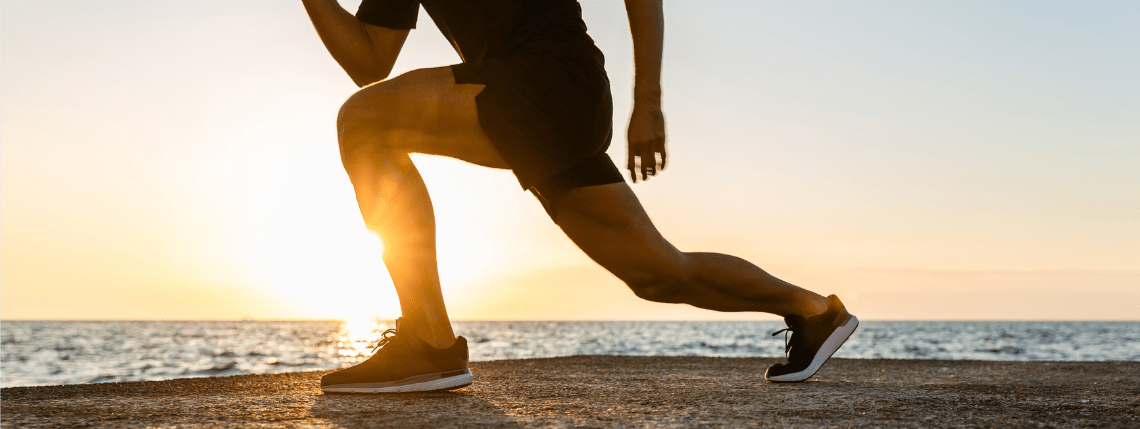For the last 15 years, the American College of Sports Medicine (ACSM) has conducted worldwide surveys to determine health and fitness trends for the following year. In the top 20 trends for 2021, bodyweight training is listed at number three. In this blog, Marietta Mehanni explores bodyweight training modifications to keep your classes engaging.
The survey for 2021 had a 40% increase in responses and, for that reason, this 15th annual survey of fitness trends will have the most impact it has ever had on the industry.
Bodyweight training appeared for the first time on the trends survey in 2013 (at number three) and was in the number two position in 2017, number four in 2018 and number five in 2019, before dropping to number seven in 2020. Bodyweight training did not appear as a survey trend option before 2013 because it only became popular (as a defined trend) in gyms around the world within the last decade.
Using a combination of variable resistance bodyweight training and neuromotor movements using multiple planes of movement, this programme is all about using bodyweight as the training modality. Bodyweight training uses minimal equipment, which makes it an inexpensive way to exercise effectively, according to ACSM’s Health & Fitness Journal.
So, what is your current bodyweight training repertoire? Is it squats, lunges or press ups? Maybe there is some form of planking and burpee exercise in there too. Perhaps your variations include timing the exercise, so that you do two counts, up and down, or four counts and variations of other tempos.
The reality for most group trainers, whether they have a group exercise or personal training background, is that finding time to come up with variations of exercises can be challenging. As a result, bodyweight workouts can feel repetitive and uninteresting.
As the trend grows, people at the start of their fitness journey, right through to people who used to be able to do jumping burpees but are not wanting to push their bodies to their personal limit anymore, will need to be catered for.
Providing options and modifications can be tricky when an instructor or trainer has a workout plan that is not flexible. When an individual is unable to do the specific exercise and they are given a modified version that does not feel effective, it is hard to be motivated to continue. Boredom is often the reason that participants lose interest and find it difficult to consistently challenge themselves.
Providing modifications can feel like the exercise has been dumbed down – hardly what an adult wants to feel when they are trying to improve their strength and endurance.
How does an instructor create variety that provides appropriate levels to cater for different needs? It begins with developing a bodyweight exercise that starts relatively easy and then slowly increases in intensity. I refer to these as sequences, and the reason why I call them sequences is because the exercise will start in a basic movement pattern and then it will be layered to progress to a completely different exercise.
To initiate the process, I decide on the starting position:
- Standing
- All fours
- Prone
- Supine
- Side lying
- Kneeling
The next step is to decide if I will begin with an upper- or lower-body movement. For example, in the standing position I could begin with a lower-body action like a forward lunge on the right leg. After this, I can add an upper-body action like lifting the arms to the side. The next layer could be a rotation of the torso. To sum up:
- Forward lunge on the right leg
- Add in the arm action (which adds an element of co-ordination)
- Add in rotation (adds a change in plane)
I can then add a lunge to the side, or a balance action so that the leg performs a circumduction or a hip hinge like a single leg deadlift.
The sequence slowly adds more and more elements of leg and upper-body actions that require more co-ordination, balance, strength and endurance. As I progress, I always encourage people to choose if they want to work harder or stay with what they are comfortable with.
This means that people choose the progression rather than having to provide a modification because the exercise was pitched at a level that was too hard.
Sequences can be built up in several ways. Add-on and a layered approach are my preferred methods. It also provides me with an opportunity to read the class to see if I will eventually complete the full sequence, which is not necessary if everyone is being sufficiently challenged.
If you are interested in learning how to develop these methods for yourself so that you can develop creative and interesting body weight training, join Marietta in the GX DAY virtual online workshop on Sunday the 30th of May, with My Group Move called “No more boring Squats, Lunges or Pushups”.
Stay in line with trends (not fads) to ensure you keep your participants fully engaged with your bodyweight workouts.
Do you use music in your classes? Develop your understanding of how to utilise music in your classes with our CPD course Move to the Beat created Marietta Mehanni and Maria Teresa Stone.








